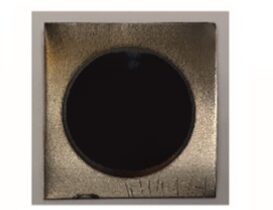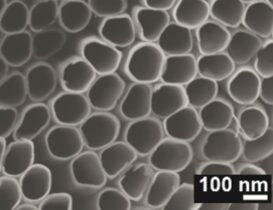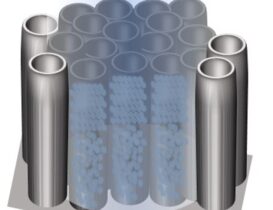Researchers from the HiLASE Centre and the Centre of Materials and Nanotechnologies, the University of Pardubice, Czech Republic have achieved crystallization of anodic amorphous TiO2 nanotube (TNT) layers into a pure anatase phase, which is the most attractive among all titanium dioxide polymorphs for photocatalytic applications. Crystallization was performed by optimized annealing using the fourth harmonics (257 nm) of the HiLASE Perla-C laser. The area of 1 cm2 is annealed during 14 minutes and the resulting anatase TNT layers do not show any signs of deformation or melting. Attempts of TNT annealing with other lasers known in literature yielded in areas with mixed rutile and anatase phases, being molten and recrystallized or intact depending on the local irradiation dose within the irradiation spot.
The successful crystallization of TNT layers into pure anatase at a high annealing speed can be attributed to unique parameters of the Perla-C laser which combines high energy per pulse at its fourth harmonics, short pulse duration (2 ps), and high repetition rate. The TNT layers annealed by Perla-C were found to have a low overpotential for hydrogen evolution (an important reaction in hydrogen-based electrochemical cells), lower than the oven annealed TNT layers whose annealing takes hours.
A joint paper on this subject has been recently published in a prestigious Open Access journal of the Royal Society of Chemistry.











